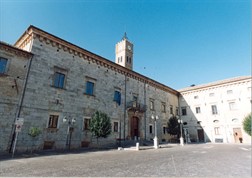The dwelling in the fief
 – The palace in their fief, which was previously the only and main residence, in which the higher nobility often had a sort of “small court“, was joined between the sixteenth and seventeenth centuries by a dwelling in the capital, where the aristocrats increasingly spent more time. The dwelling in the fief, therefore, continued to be an important tool to ensure the presence of the lord, at least at certain times of the year, as a form of control of the territory and of the vassals for economic and productive purposes, but also political reasons. Increasingly, it became a holiday residence and place for recreation.
– The palace in their fief, which was previously the only and main residence, in which the higher nobility often had a sort of “small court“, was joined between the sixteenth and seventeenth centuries by a dwelling in the capital, where the aristocrats increasingly spent more time. The dwelling in the fief, therefore, continued to be an important tool to ensure the presence of the lord, at least at certain times of the year, as a form of control of the territory and of the vassals for economic and productive purposes, but also political reasons. Increasingly, it became a holiday residence and place for recreation.
– Among the leisure activities otium, understood in literary and philosophical terms (reading, collecting antiques, writing and composing works of literature, the composition and performance of music, etc.) attained significant importance. And it is no coincidence that these activities were conducted primarily in holiday residences, where we find, when they have come down to us, rich libraries, art collections, music rooms…
– The palaces that are located within the feuds end up becoming “places of memory” which preserve and enhance their lineage and that of their ancestors. Pictures that represent ancestral portraits, coats of arms and family trees are painted on the walls or ceilings along with frescoes which represent their fiefs, memorabilia belonging to a past linked especially to the lives of their ancestors and their military exploits…
